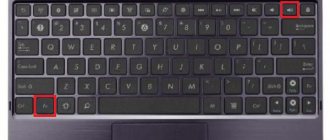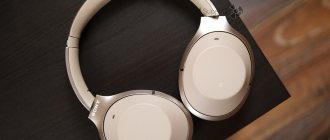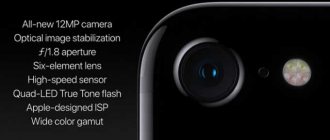Home » Glossary » What are aptX, aptX HD and aptX Adaptive?
Glossary
Stereoland 01/08/2020
SaveSavedRemoved 1
aptX is an audio encoding technology created in the 80s of the last century, popular with film studios and radio stations. These days, aptX is inseparable from the Bluetooth protocol, which you'll find in many computers, smartphones, AV receivers, headphones, and many other consumer electronics products.
In software terms, it's the codec that determines how Bluetooth transmits data from the source to your headphones. It encodes and decodes digital audio data into a specific format. Developed and supported by Qualcomm.
What's good about aptX? Its feature is the ability to transmit music with the full bandwidth of 16-bit/44.1 kHz as on a CD. It's not fully CD quality because aptX uses compression, which helps reduce audio encoding latency. It is also designed to outperform SBC, the basic Bluetooth codec. Standard aptX has a compression ratio of 4:1 and a data transfer rate of 352 kbps.
What is aptX HD?
aptX HD (also called aptX Lossless) is essentially an updated and improved aptX with better audio quality.
aptX HD was released in response to the growing popularity of Hi-Res audio and supports 24-bit/48 kHz audio. The compression ratio remained 4:1, but the bitrate increased to 576 kbps.
Like aptX, the HD version is based on frequency division adaptive differential pulse code modulation (ADPCM) technology. It also provides additional bit depth and therefore better noise performance in each subband.
Unlike traditional PCM, ADPCM only encodes the amplitude difference between samples to save on file size.
ADPCM differs from PCM (pulse code modulation) in that it does not encode each sample with a specific amplitude, but instead encodes the difference between samples. That is, less data needs to be sent for each sample, allowing you to fit higher quality audio into a smaller data packet. Therefore, the bitrates of a regular PCM and ADPCM codec are not really comparable.
Additionally, Qualcomm's frequency division implementation uses different bitrates (levels of precision) across different frequency bands. By optimizing these bands for the sensitivity of human hearing and the typical frequency components of music, Qualcomm can save on additional data without significantly impacting quality.
Compared to standard aptX, the HD version increases the bit depth of the frequency ranges by 2 additional bits. Thus, the highest accuracy is maintained at low frequencies, where most of the sounds and harmonics of instruments in music and films are found.
Simply put, it's a smart codec that not only sounds better than regular SBC, but is also consistently implemented into compatible products.
In short, aptX HD transfers more data than aptX, SBC and other A2DP Bluetooth profiles. This ensures more accurate reproduction of high-quality audio files. However, in order to make the most of these features, you also need good quality source files.
back to menu ↑
Best models
From the variety of wireless devices, I have selected a short review of the 3 best headphones with atpx hd support. Of course, everyone has their favorites, and I'm interested in your opinion. Share in the comments which “ears” impressed you with their characteristics, and most importantly, sound quality.
Audio technica ath sr5bt
Closed on-ear aptx hd headphones with a combined type of data transmission. You can use audio plug or Bluetooth version 4.2. Charging is enough for 38 hours of operation. An impedance of 45 Ohms and a sensitivity of 103 dB/mW provide clear sound with muted bass. Frequency range from 5 to 40000 Hz. A voice assistant is available, use as a headset and pairing with other devices. These atpx hd headphones cost about 8,000 rubles.
Pros:
- Excellent build quality;
- Compactness;
- Availability of a wired connection;
- Very large battery capacity;
- Stylish appearance.
Minuses:
- Not very convenient button control;
- No active noise cancellation;
- The sound is not loud and bassy enough for many.
These headphones seemed special to me due to their softer sound; you don’t always want low frequencies at the head of the orchestra. Vocals and high frequencies predominate here. They also fit very well on the head and do not fall off, even if you move very actively. And of course, a great battery life.
Sennheiser Momentum Free
In-ear aptx hd headphones connected by a cord, the so-called collar. The connection is wireless only, Bluetooth version 4.2. The battery is designed for 6 hours of use. Charging from a PC via microUSB connector in 1.5 hours. Magnetic clasp will help avoid losing your device. When using atpx and on the source, the headphones can be used to listen to classical music. Individual instrumental shades are worked out in detail. Fans of techno and hip-hop will have to work with the equalizer to add bass. Push-button control on the remote control unit below the earpiece. They don't lag behind when watching videos and are used as a headset. The price of a wireless device is about 8,500 rubles.
Pros:
- Good charge in a compact size;
- Weight only 40 grams;
- Reliable brand;
- Detailed, high-quality sound, highlighted vocals;
- Possibility of joint pairing, as well as quick reconnection;
- Remembers up to 8 devices.
Minuses:
- The control panel and Bluetooth module get in the way when moving and pull the headphones;
- They do not fit tightly and fly out easily when moving;
- Bass is muted;
- Weak magnetic clasp.
The sound is truly wonderful. Headphones are especially good for watching videos. But the design let us down, so they are not suitable for an active lifestyle. The on-ear model - Sennheiser Momentum over ear wireless m2, although it costs twice as much, is superior in sound quality and convenience.
Harman/Kardon Soho Wireless
Closed over-ear aptx hd headphones. Sensitivity of 100 dB and impedance of 32 Ohms provide balanced sound across all frequencies. Bluetooth version 3.0. Touch control. For some reason, the manufacturer does not indicate the battery life and battery capacity. From personal experience, the charge lasts for about 10-12 hours. The sound quality is excellent, all nuances are fully developed, excellent data transfer, both when listening to recordings and when streaming. Suitable for games and videos. These headphones are not cheap, around 15 thousand rubles.
Pros:
- High-quality sound;
- Great design;
- Made of leather and metal;
- Work via cable is available;
- Compact dimensions;
- Touch control that can be locked.
Minuses:
- They fly off when moving;
- The sensor responds with a delay of a couple of seconds;
- High price;
- The microphone loses a little.
When paired with devices that also support aptx, they produce very decent sound. But the most important thing about these headphones is the design. This is a truly stylish thing that makes you feel a little richer.
What do you need to hear aptX HD?
There are requirements to use aptX HD. First you need the right equipment. In particular, we are talking about the CSR8675 Bluetooth audio system on a chip (SoC).
The chipset can not only handle 24-bit audio pass-through, but also provides more digital signal processing than its predecessors. Qualcomm promises a lower signal-to-noise ratio thanks to encoding and decoding, as well as less distortion, especially in the 10-20 kHz range.
The chipset requirement means that aptX HD will only work on certain devices. There is no option to enable aptX HD via software alone. In addition, there are no possibilities for any “upscaling” of the sound.
But you don't have to worry about backwards/future compatibility. aptX HD devices will be compatible with “classic” aptX headphones and speakers.
back to menu ↑
What devices support aptX HD?
Android smartphones and tablets were among the first products to implement aptX HD. The first smartphone to support this codec was LG G5 . Other LG phones soon followed, including its 2020 flagship, the G8 ThinQ . Nowadays, aptX HD support is quite common among the latest smartphones from Sony, OnePlus, Huawei and Google.
It is noteworthy that the iPhone still does not support the aptX codec. And its main competitor Samsung in the Galaxy S9, Galaxy S10, Note 9 and Note 10 smartphones support aptX, but not aptX HD.
When it comes to portable music players, Astell & Kern is the most notable proponent of aptX HD along with the Sony Walkman (even though Sony has its own HD codec, LDAC). For example, Astell & Kern AK70 and Kann , as well as the latest A&norma SR15 and A&ultima SP1000M , Sony Walkman ZX300 and NW-A100 are compatible with the codec.
A complete list of compatible products can be found here.
back to menu ↑
LDAC
A widely advertised super codec from Sony, capable of doing the hitherto impossible - transmitting loseless audio over a Bluetooth channel. Supports 96 kHz sampling rate, 24-bit bit rate and adaptive bitrate up to 990 kbps. It would seem that in this place you can light a cigarette and relax and look into the distance. Humanity has solved another important problem; wireless headphones with LDAC now play like audiophile wired models. But not everything is so smooth. Sony does not disclose details about the software decoder and codec specifications, which complicates the analysis. Specialists from SoundGuys.com have discovered that the structure of LDAC is very similar to the PS4 codec with MDCT and Huffman compression.
Due to the adaptive structure and floating bitrate, LDAC operates in three different modes: ideally, it is loseless quality with a bitrate of 990 kbps, but if there are problems with the connection, then it drops the bitrate lower. In this case, the quality is not far from regular aptX HD. For example, the noise level at 15 kHz in 660 kbit/s mode is too high even for a 16-bit signal, let alone 24 bits. And in priority connection mode, LDAC shows even greater noise levels than standard SBC. Moreover, in the “high quality” mode, LDAC begins to lose packets at a level of -60 dB (versus -70 dBm for aptX HD), which indicates not the highest stability.
Headphones with LDAC support
Sony WH-1000XM3 from 6,699 UAH. Sony WH-1000XM4 from 9,699 UAH. Sony WH-XB900N from 5,359 UAH. Xiaomi 1More Triple Driver BT from 1,949 UAH. Sony WH-H900N from 8,325 UAH. FiiO EH3 NC from 6,891 UAH. Sony WI-1000XM2 from 5,555 UAH. Sony WH-H910N from 8,400 UAH. Sony WI-1000X from 5,760 UAH. Sony MDR-1000X from 7,499 UAH.
Therefore, LDAC does not particularly like to work at maximum capabilities, resetting to simpler modes so that you are not nervous about delays and loss of connection. All this brings to mind an analogy with a sports car that is forced to drive at a speed of 50 km/h because the road is broken.
What else affects sound quality?
If you have a couple of minutes of free time, then follow the link https://btcodecs.valdikss.org.ru/sbc-encoder/ to a service for comparing the quality of codecs and try downloading a well-known song. Then you can switch between several profiles and make sure that there is not much difference in quality between SBC, aptX and aptX HD. And the SBC really starts to crack if you lower the Bitpool value to 37 or lower.
So what's the trick? And why on any forum are people ready to break spears, proving that LDAC is many times cooler than aptX? The problem is in the hardware, namely the digital signal processor (DSP). Manufacturers of Bluetooth equipment can configure DSP for each codec separately, changing the equalizer, compander, compression and stereo settings. Because of this, when switching between codecs, the listener will think that they are hearing differences between them, when in fact they are DSP differences.
Conclusion
What conclusion can be drawn from all this? The level of technology and quality of wireless headphones has increased dramatically over the past year and a half. If earlier audiophiles avoided such equipment, and true wireless headphones were bought mainly for the gym, now we see an increasing number of famous manufacturers producing Rolls-Royce wireless headphones. For example, Beyerdynamic Amiron Wireless Price from 22,008 to 26,376 UAH. from Beyerdynamic, which cost a ton of money and are designed for serious studio work. And that's great news.
The bad news is that fate cannot be fooled and you will have to pay handsomely for top quality wireless audio. Therefore, you should not chase codecs in the hope that an inexpensive smartphone and headphones with LDAC will play like audiophile equipment. And under no circumstances buy really cheap equipment with dubious Bluetooth certification and incomprehensible codec integration. She will only cause problems.
If we return to the considered codecs, the following conclusion suggests itself.
- If you just need background music while you ride your bike or cook dinner, a regular SBC will suffice. If you're lucky with the quality of your headphones and smartphone, you'll get sound at the AAC and aptX level.
- AAC, AptX and AptX HD seem to be the optimal choice in terms of quality, stability and variability of technology with their support. Both have fixed bitrates and encoding ratios, so you always know exactly what quality you'll get. It makes sense to use AAC only on Apple devices, and on Android to limit it to aptX.
- And LDAC is designed for demanding listeners with well-trained ears and a tight wallet.
What about aptX Adaptive?
The story doesn't end there: last year, Qualcomm launched a new generation of Bluetooth codec - aptX Adaptive .
Over time, aptX Adaptive will replace aptX HD - it essentially combines the current aptX HD and aptX Low Latency codecs (aimed at improving the synchronization of audio and video content).
aptX Adaptive achieves its stated 24-bit/48 kHz streaming quality using surprisingly low bit rates from 279 kbps to 420 kbps. This is much lower than the actual 2304 kbps of native 24/48 files.
The new codec will take into account the external RF environment around the device with aptX Adaptive, so you won't experience any signal dropouts when you take your phone out of your pocket or bag. It automatically optimizes the sound depending on whether you're making calls or listening to music.
But what's more interesting is that aptX Adaptive is capable of transmitting files at 96 kHz wirelessly, even if the codec only supports 48 kHz. This could make high-definition wireless streaming between mobile devices a reality in the future, provided the connection is strong enough.
Why Apple Only Uses AAC
With AAC, audio is encoded not only during transmission, but also during storage. AAC stands for Advanced Audio Coding. At one time, this audio encoding algorithm was positioned as a successor to MP3. AAC usually has higher quality sound than MP3, with the same file size or even less.
Many people think that AAC is an Apple proprietary format, but this is not true. AAC was developed by a group of companies that included, for example, AT&T, Bell Labs, Dolby, Nokia and Sony. Public release took place in 1997. Apple only uses the AAC format to store music in iTunes and Apple Music.
Like MP3, AAC is a compressed file format. Both encoding algorithms cut off the highest and lowest frequencies, and also actively use the characteristics of human hearing to remove information about sounds that a person has difficulty distinguishing when listening to music. As a result, AAC files sound worse than CDs, but in general the algorithms compress music efficiently enough that most people won't notice a difference in blind tests.
In Apple Music, all files are in AAC 256 kbps format
Like MP3, the quality of an AAC file is measured based on its bit rate. Common AAC bitrates include 128 kbps, 192 kbps, and 256 kbps.
Without going into technical details, here are the reasons why AAC sounds better than MP3:
- AAC encoding uses samples spanning from 8 to 96 kHz, while mp3 encoding uses samples spanning from 16 to 48 kHz, resulting in richer audio;
- Higher efficiency of the algorithm;
- Greater accuracy when encoding AAC audio is achieved by using smaller sample sizes (128 or 120 units versus 192 in MP3). A smaller sample size is better because it allows a more accurate digital description of the analog sound wave;
- Sound frequencies above 16 kHz are processed more efficiently. Let me remind you that in mp3 format these frequencies are simply removed.
Thus, higher sound quality while saving space allowed AAC to win a place in the hearts of Apple engineers. In addition, Apple does not plan to allow Tidal and other Hi-Res services to deploy on its territory. So, in their opinion, there is no need to implement other, higher quality codecs in their devices. Therefore, Cupertino residents chose only AAC for wireless audio transmission in their devices. It also seems to me that Apple, for some reason, does not want to pay Qualcomm for the AptX license. It's unlikely that it's about money.
Read next: Apple will predict who will be the next music star











